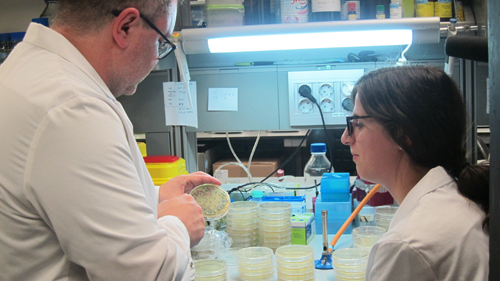When a patient goes to the doctor suspecting an infection, clinicians can order a test called antibiogram to prescribe antibiotics. Nevertheless, these antibiograms are typically performed under an aerobic atmosphere; thus, in the presence of oxygen. However, many infection locations in the human body present little or no oxygen.

Moreover, real infections can take place under changing oxygen conditions. For instance, during ingestion of contaminated food bacteria are in contact with air while, when they travel through the gut, bacteria find progressively less and less oxygen. Pathogens are able to adapt to these oxygen changes.
To overcome these challenges when studying how pathogens infect a person, researchers at the Institute of Bioengineering of Catalonia, led by Eduard Torrents, who is also working at the Department of Genetics, Microbiology and Statistics at the University of Barcelona, have developed a solution based on bioengineering.
By introducing a new technique called AnaeroTrans, researchers in Barcelona have been able to control and monitor the oxygen concentrations that pathogens are exposed to at any moment. They applied this system to study two relevant pathogens, namely E. coli and P. aeruginosa, providing an entirely different picture of the relationships of these species with oxygen.
E. coli is a common bacterium found in the lower intestine that causes both intraintestinal and extraintestinal infections. Until now, it has been studied mostly under either full air exposure or complete absence of oxygen. By using AnaeroTrans, researchers at IBEC have simulated more realistic scenarios with surprising results.
For instance, they show for the first time a description of the so-called RNR profile (RNR are enzymes suggested as valid targets for antimicrobial treatments) under different oxygen availability conditions. This shows how these RNR enzymes adapt in different ways when exposed to changes in environmental oxygen. The study also provided a global image of how different facultative anaerobic pathogens behave between aerobiosis and anaerobiosis, by describing the intermediate states, the so-called microaerobic range.
With AnaeroTrans, researchers open the door to create environments in the lab that reproduce those found in real diseases such as cystic fibrosis, to find new health solutions.
Reference article:
L. Pedraz, N. Blanco‐Cabra, E. Torrents (2019). Gradual adaptation of facultative anaerobic pathogens to microaerobic and anaerobic conditions The FASEB journal, volume 34, Issue 2





